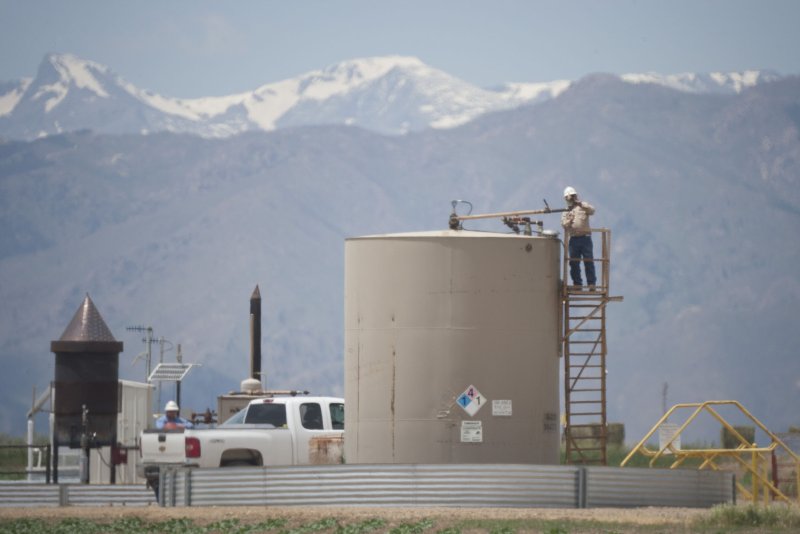Non-OPEC oil production growth is driven by U.S. crude oil gains, economists at OPEC said in their monthly report for July. File Photo by /Gary C. Caskey/UPI |
License Photo
July 11 (UPI) -- Global trade tensions won't have a significant impact on the economy, though overall demand for oil cools off next year, OPEC economists said Wednesday.
Economists at the Organization of Petroleum Exporting Countries said Wednesday they expected global growth in gross domestic product for 2018 should be 3.8 percent, unchanged from its June forecast. Growth next year slows to 3.6 percent in part on deceleration in the European economy and China. India's economy grows by 7.3 percent next year and picks up slightly in 2019 to 7.4 percent.
For the United States, the world's leading economy, OPEC said growth for 2018 was revised up by 0.1 percent to 2.8 percent, but it slows to 2.4 percent next year.
Higher consumer fuel prices in the United States, which have been at four-year highs, could offset some of the gains from tax credits enacted by U.S. President Donald Trump. Tariffs enacted by the Trump administration against legacy trade allies, meanwhile, could undermine growth in the global economy.
"However, it remains to be seen if the most recent trade-related initiatives may have some further negative impact on the U.S. economy," OPEC economists wrote.
In the U.S. energy sector, trade groups complain tariffs on steel and aluminum could throttle momentum because U.S. production trends are already straining existing pipeline capacity. U.S. steel producers don't typically make steel pipe, so the sector depends on imported products.
Trade concerns this year, meanwhile, have dragged on the price of crude oil. Brent, the global benchmark for the price of oil, was down more than 2 percent before the start of U.S. trading on Wednesday.
On market dynamics, OPEC economists said they expected the demand for oil from its 15 member states would average 32.9 million barrels per day this year, about a half million barrels per day less than last year.
"In 2019, demand for OPEC-15 crude is forecast at 32.2 million barrels per day, around 0.8 million barrels per day lower than the 2018 level," they wrote.
That forecast comes amid concerns about the lack of spare capacity, the amount of oil producers can add on short notice, is evaporating. Long-term risks from chronic shortages in Venezuela, a founding OPEC member, instability in Libya and eventual losses from Iran have added to those concerns.
OPEC economists revised their forecast for production from non-member states by 140,000 barrels per day for 2018 for an average of 59.54 million barrels per day, a 2 million barrel-per-day increase over last year. Non-OPEC supply expands another 2.1 million barrels per day next year.
"The main growth drivers are expected to be the United States, followed by Brazil, Canada, Australia, Kazakhstan and the United Kingdom, while Mexico, China and Norway are expected to witness the main declines," the wrote.















